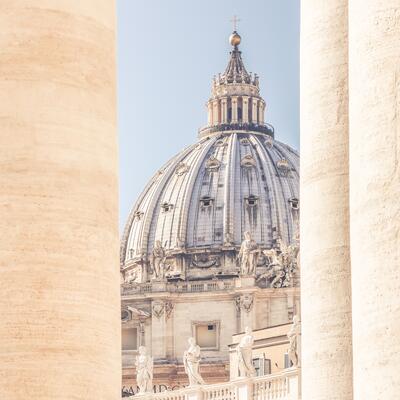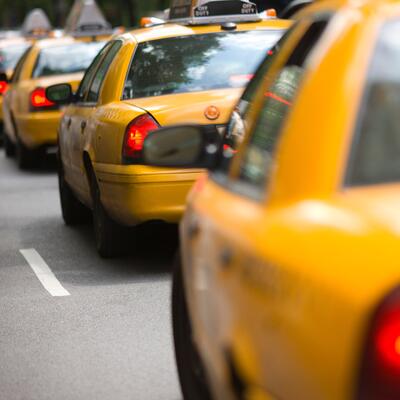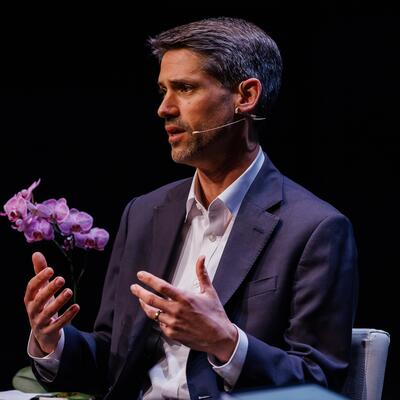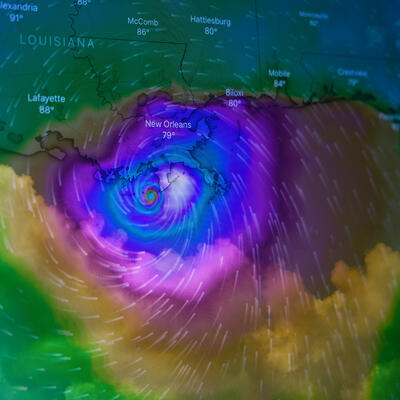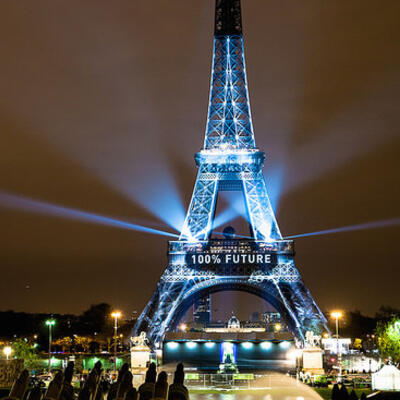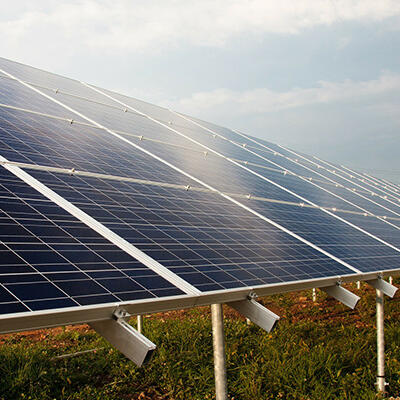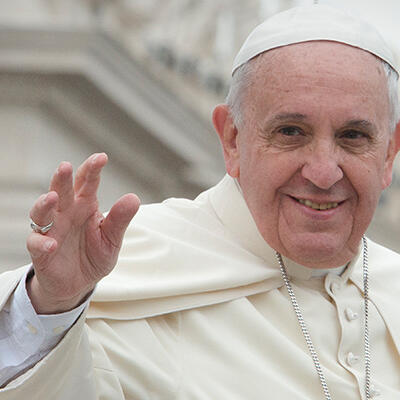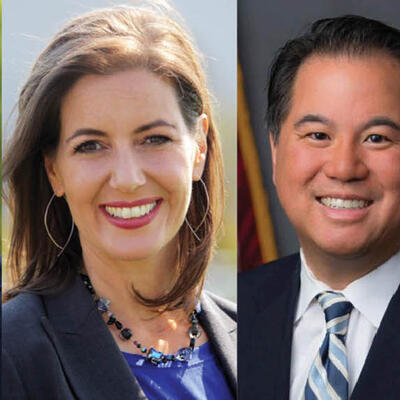
Liccardo, Schaaf and Ting vs. Global Warming
Guests
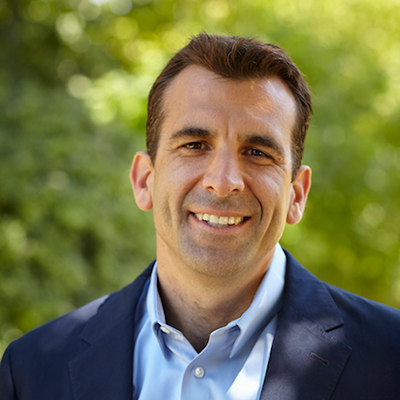
Sam Liccardo
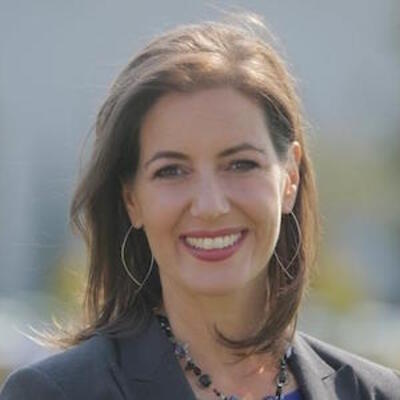
Libby Schaaf
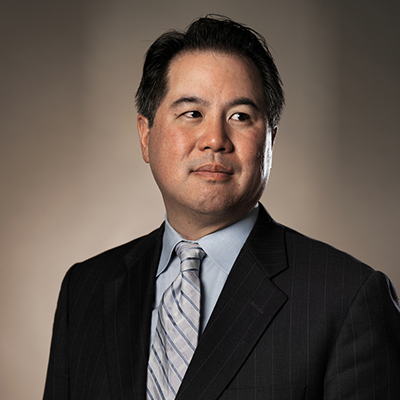
Phil Ting
Summary
The global effects of climate disruption will have local impacts on the Bay Area. The political leaders of this region are already planning for a future with a new normal.
Sam Liccardo, Mayor, San Jose
Libby Schaaf, Mayor, Oakland
Phil Ting, California State Assemblymember (D-19)
This program was recorded in front of a live audience at the Commonwealth Club of California on April 20, 2016
Full Transcript
Greg Dalton: From the Commonwealth Club of California this is Climate One. I'm Greg Dalton. Temperatures and seas are rising around the Bay Area and today we will discuss how the region is getting ready for our new normal. Experts say Bay Area residents will have more beach days in the future and also more opportunities to work in the growing clean-tech economy, but the changing climate also brings big risks and costs. Over the next hour we will talk with our live audience in San Francisco about the upside of a cleaner economy and the downside of climate disruption.
We’re pleased to be joined by three eminent Bay Area leaders; Sam Liccardo is Mayor of San Jose. He traveled to the Vatican last year to participate in a conference convened by Pope Francis. Libby Schaaf is Mayor of Oakland. She attended the Paris Climate Summit in December where 195 countries pledged to grow their economies and cut carbon pollution primarily by moving away from fossil fuels. Phil Ting is a member of the California State Assembly representing the west side of San Francisco and Daly City. He's the new chair of the assembly budget committee. Please welcome them to Climate One.
[Applause]
Thank you all for coming. Let's begin with Mayor Schaaf. Clean-tech is not often on the top of mind when someone thinks of Oakland, what's happening in Oakland in terms of clean-tech jobs companies, what’s going on there?
Libby Schaaf: You know, we have more than 7,000 clean-tech jobs in Oakland. And we’re fast becoming one of the highest concentrations of solar related companies and organizations of anywhere in America. And so it was great being in Paris to talk about how climate change actually can be an economic driver for a city and for a region. And I think that’s something that California as a whole state is very proud of.
Greg Dalton: Actually more sun in San Francisco so that kind of makes sense. Sam Liccardo, Silicon Valley kind of fell in love with clean-tech and then fell out of love with clean-tech after they realize it's not so easy to make some money in that versus software. Where is the clean-tech job creation as part of your economy down in San Jose?
Sam Liccardo: Well, it's still growing strong and we have great companies like SunPower makes the most efficient solar panels in the world and wonderful technology from Bloom and Tesla and a lot of the companies that are really going to transform and hopefully decarbonize our economy. But the reality is that we need both the innovation and we need the manufacturing. And that requires a bit of a challenge right now given the price of land in a lot of parts of Silicon Valley throughout the Bay Area to be able to accommodate both. And so we’re grappling that a little bit but we’re starting to see manufacturing revive.
Greg Dalton: Because one of the raps against Silicon Valley is that they create cool things than made elsewhere; that most of the value and the jobs go somewhere else. So you're saying --
Sam Liccardo: Yes, greenhouse gas emissions occasionally flow from shipping all those products from other countries. So we want to do everything we can to ensure that they get manufactured here at home. We’re really seeing great opportunities increasingly do that particularly with high-value products increasing and the companies are recognizing the value of doing the manufacturing where the engineering is happening, where the design is happening.
Libby Schaaf: And Greg, if I could just throw in real quick. We’re also looking at the social equity angle of the economic opportunities. And so we’re working for example with an organization called Rising Sun and they are training low income people of color as well as our reentry population to go into neighborhoods usually where they grew up and help residents do energy audits of their own homes as well as train people to do the installations of solar panels.
So we’re really looking for opportunities to leverage our climate action work with our social equity agenda.
Greg Dalton: Phil Ting, how about statewide, you obviously represent San Francisco but sit in Sacramento. California is known as a clean energy leader. What are the priorities up in Sacramento in terms of pushing this forward?
Phil Ting: Well last year we had a banner year where we really double down on our climate change legislation. We renewed AB 32 to really reduce to increase the RPS standard from 1/3 to 50% by 2030. And then on top of that we also went and set a goal for the building environment to make sure that 50% of the buildings in the state are now energy-efficient. The one piece of the trifecta we weren’t able to get done was how to figure out how to reduce our dependency on petroleum usage by 50%. I think the governor is gonna be really pursuing avenues administratively, we’ll be looking at different avenues. One of those ways is to through our cap and trade funds. Cap and trade is a program where you're basically taxing pollution and using that money to incentivize greenhouse gas reductions. One of those things that we’re going to be doing is really putting more money at the clean vehicles and that's consumer vehicles, but also vehicles that deliver materials in the ports and all that, all the high commercial vehicles too.
Greg Dalton: And the reason the governor didn't get that trifecta was moderate Democrats in the Central Valley and pushback from the oil industry. So what's -- the oil industry is not gonna sort of let that happen, how do you think the governor is gonna be able to do that over the opposition of industry?
Phil Ting: Well, one I think he’s gonna do part of it administratively. And I think others is we’re gonna have to look at other strategies. I think one thing people were opposed to was really taxing gas or actually reducing gas usage. There was this sort of rumor going around that we’re gonna have to ration gas like the 1970s, and I think that was not true. But what we can do is really move people away from gasoline. I know Tesla just announced their cars gonna be a major change where now consumers can actually access that technology with more and more people using that as well as natural gas vehicles or hydrogen fuel cells.
We’re gonna really try to challenge consumers to move away from petroleum and that will hopefully reduce our reliance on it.
Greg Dalton: Mayor Liccardo, the city of San Diego is under a mayor who is a Republican, and they have a pretty ambitious hundred percent renewable goal in San Diego. What do you think about San Jose could you get to 100% renewable?
Sam Liccardo: Sure. The challenge of course is when, right?
Greg Dalton: And what cost?
Sam Liccardo: Yeah, absolutely. And we are putting together a strategy actually this year and hope it will be successful at the launch in a few months. What we’re working on primarily is really trying to see how we can do what they failed to do in Paris, which was really commit to goals that would ensure that we would keep temperature rise at less than 2°C by 2050. That requires extremely ambitious goals around reduced reduction in greenhouse gas emissions, about 6% annually for a city like San Jose. Challenging thing to do when in fact you're growing enormously in population at the same time; gonna add probably 350,000 people by 2040. So we've got to somehow see how we can essentially fix this engine while the car’s running down the road. And I think we’re primarily gonna be focusing on certainly our renewable portfolio in terms of electricity generation and distribution moving to community choice aggregation for something we’re studying very intensely now be coming back for decision later this year. Really seeing how we can electrify our transportation, infrastructure significantly. I think we really want to get more car charging stations out there that’s gonna be critical.
And really push on a lot of opportunities that we see in the technology ecosystem around us, there’s some incredible innovation happening around us. We just need to see how we can better leverage it, and civic applications.
Greg Dalton: Mayor Schaaf, San Francisco recently first of the nation has a law new buildings have to have solar on top. You mentioned Oakland being a solar leader; would you consider requiring new buildings in Oakland that have solar?
Libby Schaaf: Oh you know we do have a green building ordinance in place and we are looking at modernizing it. But I think that where Oakland really wants to play a leadership role is not just looking at our core emissions, which is the traditional way that cities measure how they're doing as far as producing greenhouse gas. We’re really looking at our consumption. So in other words, it's not just how much greenhouse gas gets emitted from within the boundaries of the city of Oakland. But when I buy this pair of shoes, how much greenhouse gas was emitted in the manufacturing and transport of these shoes that I have now consumed? And in Oakland, we've really been focusing on that consumption goal. So far, we've reduced by 14% and that is during a growing economy. And so we’ve really been focused on for example, our zero waste goals and very aggressive recycling, particularly curbside pickup of food waste which we are also partnering with East Bay MUD to try and digest that and turn it back into energy that gets sold to the grid. So those are some of the innovations. And that was a cool part about Paris was really lifting up the roles that cities can play in this global challenge.
Greg Dalton: So how does the government actually do that, tell people, hey, don’t go on Amazon tonight and get that thing tomorrow. Wait two days or go to downtown Oakland and shop for it, is that kind of telling people to resist those carbon intensive impulses?
Libby Schaaf: Well, I think there are two lessons that we learned in Oakland. One, train the children and the children will train their parents. As a mother, what the kids are learning in school is really powerful and it's really been a successful model. The second was a real learning experience that we had in going towards this zero waste contract. You know, the technology exists now for them to separate the food waste out after collection. But the Sierra Club really lobbied us to do something that probably is gonna have less diversion right away but serves to really educate and create consciousness about where your garbage goes. By making people sort of separate themselves in their homes, in their apartments and actually put your food waste in what we call affectionately the stinky pail at our house and really look at how much garbage am I putting in this container marked landfill. It creates a consciousness that we believe will have bigger dividends down the road.
Greg Dalton: Phil Ting, waste disposal, waste is a big part of carbon emissions, food, et cetera. San Francisco has one of the very first composting laws but that’s a very local thing but hard to get at. Is there a way that the state can get that such a big issue that’s so localized?
Phil Ting: We did, we passed a major composting waste reduction legislation in 2014, Wes Chesbro, sort of his legacy legislation. I think what we can do is really try to aggressively from a state level draw attention to it. A lot of that what we did in San Francisco was work very closely with our waste provider which is Recology and they did a lot of the day-to-day rolling it out. I remember when they rolled out the three trash cans, you know, these three trash cans and they’re the biggest hit when you get the little ones and the kids all love seeing them. But for us from a state level it’s really working with everybody all in different jurisdictions to try to figure out what fits with them. Because what works in San Francisco may not necessarily work in Merced or Eureka or even down in the Imperial Valley. So I think what we try to do is try to set broad guidelines and really raise awareness so people can understand this is something that can be achieved with the right partner.
Greg Dalton: Let's talk about Measure AA that's on the June primary ballot in the nine Bay Area counties. Libby Schaaf, what is Measure AA and what would that do for Oakland and other surrounding counties?
Libby Schaaf: Measure AA is an incredibly critical ballot initiative this June. And it’s kind of historical because this is the first time that we as a region have acted in a unified manner around something other than how to spend the Bay Bridge toll. And we are the Bay Area, we are defined by our Bay and yet we see the devastating impacts of sea level rise. And so Measure AA is a mere $12 a year for each parcel of property owners in the nine Bay Area counties and that money will go to restore wetlands.
California of all of its coastline, one-third of it is in the bay. So if we can do something to really mitigate against the horrific effects of climate change and sea level rise in the Bay Area we really have done something for California. By restoring wetlands and this money, this land has already been acquired; it's sitting there waiting to have the wetlands restored. And just, you know, historically since the time of the gold rush the Bay Area has gotten rid of 80% of its wetlands. That means that those natural filtrations are gone, that means the water is more polluted it's more dangerous not just for wildlife but also for people. And then it also means that we don't have that great spongy substance and that gentle slope that makes the tide action as well as extreme storms have the same impact on our communities and we know that this is gonna be critical, particularly for our vulnerable communities that are -- when we look at the what we call the scary maps, it is our communities that are already most impacted that will really bear the brunt of the sea level rise and flooding.
Greg Dalton: Sam Liccardo, the Army Corps of Engineers often considers the South Bay, San Jose most vulnerable to sea level rise particularly put in earthquakes cause there’s a lot of earthen levees down there that aren't very strong. So what's at stake for Silicon Valley businesses in buying this insurance, these wetlands which will kind of buffer the Googles and Facebook that are really on the bay from future storms?
Sam Liccardo: Certainly there are plenty of very prominent businesses there right on the shoreline. But we know they've got resources to take care of themselves, we’re concerned about a lot of folks we got very vulnerable community there, Alviso, a working-class community with thousands of residents that are constantly in harm’s way whenever there is a storm surge or concern about flooding. We've got a water pollution control plant there and I can assure you if you are mayor of the city the last thing you want to go is your sewage plant. Nothing good happens when that happens and that's underwater. We’ve got a lot of assets right there on the bay and so we got a project underway now with the Army Corps to restore 3,200 acres of wetlands really critical for us. Certainly for all those assets I described all the folks who live in there, but it also by the way, we happen to have Cisco and TiVo and Brocade, and a lot of other companies sitting right there on the shoreline and we’d like to keep them around.
Greg Dalton: Sam Liccardo is the Mayor of San Jose. Our other guests today at Climate One are Libby Schaaf, Mayor of Oakland and Phil Ting, State Assemblyman from San Francisco. Phil Ting, I spoke with Jon Coupal, whose head of the Howard Jarvis Taxpayers Association, invited them to be part of this conversation, he wasn't able but he said on Measure AA, California already has high fuel costs; why do we need more taxes, and this is actually regressive because Apple headquarters is going to pay the same $12 as the resident in Alviso or Alameda, your response.
Phil Ting: I wanted to first start by just going back to what Mayor Schaaf just talking about, about why this measure is so important. I was proud to be on the original San Francisco Bay restoration authority as the San Francisco member on the original formation working with Save the Bay and David Lewis. And what's amazing is the amount of mileage around the bay that really is at risk. But what's really simple is what Mayor Schaaf talked about is how easy just doing habitat restoration will be to really naturally stop what's going on, that this is really the best protection. If you think about like Holland, if we think about, you know, throwing sandbags when things are getting ready to flood. That really isn't the best way to do it. Just doing this habitat restoration is not just good for the environment but it really is the best way to slow down sea level rise.
In terms of Mr. Coupal, Mr. Coupal represents the Howard Jarvis Tax Organization. I don't think there's ever been a tax that Mr. Coupal would ever support so that's the first point. We know we’re in the Bay Area we’re a little more on light. We understand if you want to spend money on things that are critical to our community, then you actually to raise money. He's very good at spending; he's not really good at raising a dime. The other part about the progressivity what’s interesting is I used to be the former assessor here in San Francisco. And he's correct we are quite high in other taxes and the reason we’re at the very bottom in terms of property taxes is because of Howard Jarvis and Prop 13. So actually the one area where you could stand to increase a little bit of taxes relative to what we’re doing. We’ve been in the bottom quartile nationally in property taxes so just $12 a year is fairly minimal in terms of what it costs relative to where we compare with other states.)
Greg Dalton: It’s about one latte. Mayor Liccardo.
Sam Liccardo: Yeah, I just want to jump in. We’re all very sensitive to regressive taxes but you know, Phil made a good point, 12 bucks a year, if you own a property in the Bay Area you can probably afford 12 bucks a year. But this is such a small investment for somebody that has such an extraordinary impact the ability to restore these wetlands, which really has an awful lot of benefits that really include all of us whether we’re concerned about the quality of the water, whether we’re concerned about simply sea level rise and our resilience, whether we’re concerned about restoring the bay. There's also carbon sequestration benefits that we get from bay lands restoration. There is just so much benefit all throughout this. I am really kind of surprised that even Jon Coupal would oppose this. But I guess I shouldn’t be.
Greg Dalton: No, you shouldn’t be. Even supporters would say Libby Schaaf, this is just the beginning of what’s needed. You used to be involved with the Port of Oakland, that’s a huge economic engine for the Bay Area, that’s at risk. So where are the supposed -- this $12 passes, that’s wetlands, that’s good. Where’s the next big chunk of money gonna get to sort of build the future we need in the Bay Area in a hot world?
Libby Schaaf: Yeah I know, in Oakland our coastline is our economic engine. Both our port as well as our airport are right on the water. 73,000 jobs supported by the port activities. And so the great thing and you should tell Howard Jarvis as well is that by creating a local tax it makes us so much more competitive for state and federal funds. So a lot of times when you make a small investment, it draws other funding sources into your area and again it creates this awareness. I mean one of our biggest assets is human behavior. And so the more that we make these small investments that actually build knowledge and awareness, we can actually leverage that so many more times over.
Greg Dalton: Phil Ting, cap and trade, putting a price on carbon pollution in California. There’s a few billion dollars that flows from that to reduce carbon pollution in the state. Where is it going and tell us where that is, a couple billion dollars, growing pretty big now.
Phil Ting: Well but one thing I want to just jump back to for a second is really how important the bay is. I unfortunately didn’t get to grow up in the Bay Area I grew up in Los Angeles. And growing up in a place where there is no bay it’s something that is absolutely a treasure not just to us from an environmental standpoint but like you said from an economic standpoint, it’s something that we frankly we take for granted every day. And I think Measure AA is really our community making a statement that this is really worth saving, this is really worth preserving on so many levels and is such a source of pride for all of us.
In terms of cap and trade dollars we have about $1.2 billion of ongoing funds. Famously, one of our governor’s major projects which I’m a supporter of is high-speed rail and we’re working very hard to make that a reality. I’m really excited about the potential electrification between San Francisco and San Jose. And now that the high-speed rail authorities really turned to focus on the Northern part of the rail project rather than the Southern part, I’m even more excited. Because frankly, we all know in the Bay Area we actually ride transit. I can’t really speak for my colleagues from the south but we know that in the Bay Area -- we know in the Bay Area we ride transit every single day and we have so many folks who are really the lifeblood of that backbone of our economy is transit and that’s a huge chunk of the money.
The other piece of the money is affordable housing, affordable housing as we know is probably the biggest issue in our region and it’s not just the reason it has, it’s in there to reduce greenhouse gas effects to affordable housing that’s located next to transit notes. So be next to BART stops, next to Caltrain stops, next to Muni stops or AC Transit or any of the major stops around the Bay Area. The other piece that is really again what we talked about earlier is trying to reduce the consumption of petroleum by and really incentivizing more clean vehicles both from the consumer end but also incentivizing the creation of clean vehicles and really developing that technology.
Greg Dalton: I want to go to our lightning round. We’re talking with Mayor Sam Liccardo, Mayor Libby Schaaf and Assemblyman Phil Ting. I’m Greg Dalton at Climate One. So let’s go to our lightning round which is a brief group of yes or no questions. Starting with Assemblyman Ting; yes or no, the Bay Area will have to make difficult and expensive decisions about what neighborhoods they can afford to protect from being flooded by an expanding bay?
Phil Ting: No.
Greg Dalton: Follow up for Assemblyman Ting, the state simply cannot afford to protect every piece of vulnerable property?
Phil Ting: No.
Greg Dalton: Mayor Schaaf, if you own a piece of property directly on the bay or Pacific Ocean, you would sell it now?
[Laughter]
Libby Schaaf: Yes.
[Laughter]
And I would donate the proceeds to the Oakland promise.
[Laughter]
Greg Dalton: Mayor Liccardo, a recent study from Stanford scientists predicted that San Jose will have the weather of San Diego and Seattle will have the weather of San Jose, true or false? Basically moving north.
Sam Liccardo: I’ve heard the story. I guess I’ll say true.
Greg Dalton: Stanford scientist Ken Caldeira. Yes or no Phil Ting, the Bay Area needs a second BART tube?
Phil Ting: Yes.
Greg Dalton: Also a follow up for Assemblyman Ting, paying for it will involve state funds provided with the support of Southern California politicians?
[Laughter]
Phil Ting: Yes to the first part, no to the second part.
Greg Dalton: Mayor Liccardo, cleaning up the climate will involve personal sacrifice?
Sam Liccardo: Yes.
Greg Dalton: Mayor Schaaf, cleaning up the climate will involve personal sacrifice.
Libby Schaaf: Yes, and it’s worth it.
Greg Dalton: Assemblyman Ting, cleaning up the climate will involve personal sacrifice.
Phil Ting: Absolutely, yes.
Greg Dalton: Not often you hear politicians talking about personal sacrifice. Now into another kind of sacrifice. Mayor Liccardo, efforts to lure the A’s from Oakland to a new ballpark in San Jose are over?
[Laughter]
Yes or no?
Sam Liccardo: The Supreme Court said so.
[Laughter]
But if anybody else has a major league team and you’re interested we are still open.
[Laughter]
Greg Dalton: Mayor Schaaf, San Jose’s efforts to quietly steal the A’s are ongoing, yes or no?
[Laughter]
Libby Schaaf: No.
Greg Dalton: Assemblyman Ting, if your voters on the west side of San Francisco would allow a new waterfront stadium near the San Francisco Zoo, you would try to steal the A’s to your district?
[Laughter]
Phil Ting: No.
[Laughter]
Greg Dalton: Never happen, they don’t want anything. They don’t want a garage build out there in the sunset.
Phil Ting: We have a baseball team.
Greg Dalton: Mayor Schaaf, the Golden State Warriors’ new waterfront stadium in San Francisco will one day be an excellent place to play water polo.
[Laughter]
Libby Schaaf: Actually, as much as it pains me to admit that the Warriors might leave, I would not want it to be underwater. So, not if I can help it.
Greg Dalton: Last question for Mayor Liccardo, rising seas will one day make the Oracle Arena an excellent venue for Olympic swimming events.
Sam Liccardo: No. We’re gonna make sure we protect the bay lands and the wetlands. We’re gonna get this measure passed. Great things will happen.
Greg Dalton: That ends our lighting round. How do you think they did, I think they did pretty well. Let’s give them a thanks for that.
[Applause]
[CLIMATE ONE MINUTE]
Announcer: And now, here’s a climate one minute.
In his book The Metropolitan Revolution, Bruce Katz writes that cities are the future. When he came to Climate One in 2013, Katz explained why he believes that cities have what it takes to spur our economy and ultimately, fix the broken politics of big government.
Bruce Katz: Cities are really networks of elected officials like the mayor, the county leaders but also corporate, civic, union, university, philanthropic. All of these different sectors of our city are different portions of the network. They can do amazing things by themselves, but when they come together they can do grand things. And I think cities are really governed, co-governed -- what I would call a pragmatic caucus. They put place over party, they put collaboration over conflict and they put evidence over dogma. It's almost the opposite of how Washington operates today. So I think what can happen in the United States and it's already happening, the positive pragmatic energy that's underway in the country. If we can see city after city, metropolitan area after metropolitan area collaborating to compete and finding their game changers, and finding their transformative interventions, and becoming more competitive and more inclusive and more sustainable, over time, that pragmatism will infect states and ultimately infect the national government. America is the most resilient society and the most innovative economy. So folks, we will get our act together but this time around it will come from the communities that are the engines of our economy, the centers of trade and investment and now the vanguard of policy innovation.
Announcer: That’s Bruce Katz, author of The Metropolitan Revolution: How Cities and Metros Are Fixing Our Broken Politics and Fragile Economy. Now let’s join Greg Dalton and his guests at the Commonwealth Club.
[END CLIMATE ONE MINUTE]
Greg Dalton: So let’s come back to BART. There’s a measure, talk about some bonds next year, later this year actually Mayor Liccardo, BART is about to come to San Jose do you think there’s appetite for four, five more million dollars in bonds to fix up BART?
Sam Liccardo: Yeah, there is and we have a huge pent-up need right now to address the traffic congestion we see all over our roads and we know that transit is really that critical answer for so much of that. We also know regionally there are efforts obviously to shore up the capital needs of the entire BART system. And Libby and Mayor Lee and I are all talking about how we might look toward 2018 for something bigger and regional level across all nine Bay Area counties, much as we’re doing now with Measure AA to really make even more significant investments in transit infrastructure. We have a lot of catching up to do as the old Chinese proverb goes certainly the best time to plant a tree was a generation ago, but the next best time is today.
Greg Dalton: Mayor Schaaf, there was about $400 million to get a little spur from the Coliseum station to Oakland airport. Pretty expensive, how are you gonna convince voters that BART is, you know, money well spent when it's $1 billion to get to SO, $400 million to get to Oakland, it’s big bucks.
Libby Schaaf: Well, first of all this BART bond measure really looks at fix it first and core capacity. And as someone who rode BART over here, I'm in good company. That I get to know my fellowman very intimately on many of my BART rides. But the truth to the matter is even though as mayor I could be driven places, BART is faster because traffic is so bad. And this is an overarching theme, traffic congestion, climate change, affordable housing, jobs/housing balance -- these are problems that don't respect municipal boundaries. We have to act as a region and also see the interconnectivity of all these issues, if we're gonna put this region and our individual cities on the right track and really serve the people that we have living in our cities.
Greg Dalton: Assemblyman Ting, you chair the state budget committee, do you see appetite for few billion dollars in BART bond?
Phil Ting: You know, I think all you need to do is look at what happened when people didn't have BART for a day. People called in sick, people didn’t show up to work, the Bay Area economy took a huge hit. Every time you do a major infrastructure, whether it's high-speed rail, or whether it's rebuilding the bay bridge there's always critique. I'm sure if you go back and look at when we built the Golden Gate Bridge I’m sure there was a lot of naysayers about how expensive it was and that it was never gonna pay off. But years later, we find out that we absolutely cannot live without it. And again our economy is regional now it’s no longer a San Jose, Oakland, San Francisco economy. It is a Bay Area economy where we all travel between all the different cities all the different regions and it's even more important at that time to make sure all the transit nodes are linked. And if we don’t link them then we’re running this huge climate change problem because people will be commuting from Tracy, Modesto, Vacaville and driving three hours to get to their --
Libby Schaaf: They already are.
Phil Ting: They are. And the only way to get them out of their cars is to try to get them into transit. So I think absolutely there's has to be a way that we are looking to fund more transportation.
We at the state are looking at it right now. We've been desperately trying to raise taxes at the state level to fund transportation. It's been very hard, as all of you know, you need two thirds majorities to raise taxes in the legislature and we don't have two thirds majority for either house right now. So getting a single Republican vote to increase fees even though they’re for roads or transportation in their own areas is next to impossible.
Greg Dalton: Mayor Schaaf, climate is often thought of as an elite concern. Polar bears, glaciers -- when you're in West Oakland when you're talking to people who are trying to get by and pay the rent, how do you connect climate or fossil fuel to those people's concerns? Do you hear about it from your voters?
Libby Schaaf: Climate gives us an opportunity to address equity issues. And so when I talk to low income residents that, for example, are transit dependent.
If there is a sliding in their neighborhood it is harder for them one, to evacuate and two, to get their children to school, to get medical help, to get to their jobs. When we look at people who live near the Port of Oakland the asthma rate is shameful, shameful. And so when the Port of Oakland required ships that come into dock to stop just idling those dirty diesel engines and plug into some clean electrical source, that has a direct impact on the people in West Oakland, who don't have to bring the children to the doctor so much, who don’t have missed days of school and missed days of work. People who live near flooding hazards can have respiratory ailments from more mold and mildew.
This is a human issue and I love saying this like we talk about sea level rise with an image in our minds about rulers sticking out of a body of water. And we’ve gotta stop thinking about that, we've got to think about the family that is stranded in the flooded neighborhood. The family that is bringing their child to the hospital with an asthma attack because of the quality of air instead of bringing them to school. We have to put humans in the center of this.
Greg Dalton: Mayor Liccardo, that’s a lot of what Pope Francis was saying in his encyclical is think about the people, the equity issues, people hurt by the fossil fuel economy. How do you see that we can address climate and equity at the same time, cause often clean energy costs more?
Sam Liccardo: It can; obviously it depends on how we invest and how we plan. But I think Libby is fundamentally right here this is both a question of social justice and environmental justice. And, you know, it is so ubiquitous in cities like San Jose and really throughout the state how close you live to a freeway has enormous impacts on your health and we can predict what your income is based on your proximity to that freeway.
We know that the mobility of people, the ability to get to jobs, to get to school, to get to services, is so much more constraint where you do not have cities with great transit options. You know, this dependence that we have on the automobile is not just, it does not just take an environmental toll it is clearly take an economic toll. We are stranding entire communities with freeways that have cut through working class neighborhoods, really destroying those neighborhoods and isolating communities from opportunities in various ways.
Phil Ting: I want to dispel a few myths I think by your question. So one is we actually have more jobs in this state in the clean energy sector that we do with the three IOUs combined, the IOUs I’m sorry PG&E, Edison and San Diego Gas and Electric. So again, this has meant so much to our economy, not just in the Bay Area but really all up and down the state that the clean energy economy now has more employees than the three large utilities in the state. The other part that's really fabulous, especially in solar, solar now at a price point is completely competitive with fossil fuel. The other piece of solar that really is wonderful is these are great entry-level jobs. These are jobs that don't leave California because if you want to put solar panels on a roof in California then that’s a California job, that’s a Bay Area job, that’s an Oakland job, a San Jose job, a San Francisco job. And that's what we've really seen by investing in the state puts resources in, rate payers put resources in, I know we as a city in San Francisco put resources in. And we’re really reaping the benefits because our neighborhoods are reaping the benefits of the economy and the environment but we’re also seeing a huge uptick in jobs.
Sam Liccardo: And to add, you know, financing tools have come a long way with PACE programs. San Jose has now got the fifth highest dissemination of solar of any city in the country and we’re gonna keep growing fast as we get more PACE programs out there to enable folks to be able to finance those improvements and hopefully be able to do it increasingly in multifamily properties.
Libby Schaaf: Just to make sure people know what PACE is, it’s the ability to put energy efficiency improvements on your property taxes. So it’s kind of self-financing you don't have to pay it all if you end up selling the property. And I think a lot of people don't realize that you can also re-landscape your lawn for drought resistant plants also, along with energy efficiency.
Greg Dalton: We’re talking about resilience and climate change at Climate One, I'm Greg Dalton. That was Libby Schaaf, Mayor of Oakland. Other guests today are Mayor Sam Liccardo of San Jose and Assemblyman Phil Ting. So that's a good point the drought we haven’t touched on the drought yet. Water is a really big issue, Sam Liccardo, we had a wet year but it's -- El Nino didn't bring as much water as it might have. So what are you doing down there to manage water?
Sam Liccardo: The drought will be with us and we've got to do both the little things and the big things. The little things we need to do a better job in ensuring every consumer has the information they need to be able to conserve properly. And that means smart meters and those programs ensure people are responding well to prices and water we need a little help from the state PUC to change some of the rules as well that ensure that we can pass along prices to those who are consuming more. And the big things are important as well and I know all of our cities are working on major capital projects. What we’re working on San Jose is a groundwater recharge program taking recycled water, purifying it to very high levels. We’re already purifying about eight million gallons a day today. That's water we can drink; at least I can drink it. The state won't yet approve it for drinking but I’ve tried it and I can tell you it's a less lot less toxic than whatever I drink in college.
[Laughter]
We’re taking that water and we want to put it back into the ground because we are really concerned about the extent to which this drought has caused our ground levels to shrink. And so we’ve got to bolster that and then create a sustainable clean water supply right underneath our feet.
Greg Dalton: Phil Ting, should the state invest more in dams and storage, put resources there or recycling, storm water capture, those sorts of things?
Phil Ting: Yeah, I’m much more of a fan of recycling water and the storm capture. It's a big issue in the Central Valley where storage is a big issue and so when we did our last water bond there was some storage in that water bond which we as voters all passed and it was actually very, very critical that we passed that water bond because much of it is going to repair and maintain and manage the infrastructure that really helps deliver that water. And unfortunately just similar to the BART bond that’s on discussion, all it did was just maintain the water system. Didn’t expand it, didn't actually give us additional water it just really made sure that the maintenance was there for the deferred maintenance that had been there for so many years. So water is still a major issue at the state level. It's probably the toughest political issue in the state because agriculture as we all know uses about 80% of our state's water supply and again they are a huge part of our economy and a huge part of a particular region the Central Valley in the state and so that is a very contentious issue. My hope is that we’re gonna continue to make more progress we’re very lucky we had an El Niño year but there’s no question we have to look at new technology whether it’s desalinization, whether it is looking at all the technologies that Mayor Liccardo just mentioned. But really I think we have to continue to push the envelope for what we do best, which is to very much innovate in these technologies.
Greg Dalton: Libby Schaaf, there’s a big coal terminal planned for Oakland, is that a good idea to put a bunch of money into coal at this time? The largest US coal company just filed for bankruptcy.
Libby Schaaf: Well, let me start by saying that the city of Oakland must, has a duty to abide by all of its contractual obligations. And so I'm really not at liberty to talk specifically about this terminal. I can talk very generally about my absolute commitment to ensuring that not just Oakland but the state of California stop handling coal and stop promoting the use of coal not just where we live, but in any part of the world.
We, in the city of Oakland are very seriously studying potential health and safety impacts of handling coal at our terminals and are looking at our options for adopting appropriate regulations and that is our right to do for this particular project. I'm very focused on doing that in a way that is responsible and consistent with what I believe the people of Oakland feel very strongly about.
Greg Dalton: We’re talking about building a future dealing with climate change. One thing that’s been noted Phil Ting is chair of the budget committee is that people in California pay sales taxes on goods but not services. We’re in a gig economy where service economy is a bigger part of it. Can you envision a day as chair of the budget committee when services are subject to sales tax in a way that goods are now?
Phil Ting: Well I think we -- you know, our tax system is completely broken. I’ll say that. We have a really archaic old tax system. And if you think about it people's frustration with sales taxes going up and up and up is partly because we are taxing things that as part of our economy are shrinking. So of course as the part of that economy shrinks in order to get more revenue you have to go raise it. While the part of the economy that is growing we actually don't touch at all. So if you’re actually gonna provide tax relief for everybody, what would be smarter is potentially lower the rate, smooth it out across the board and actually provide greater relief across the board.
We’re actually seeing some of this starting to percolate in Sacramento because we actually tax things that really don't make much sense. I have two of my colleagues who are fighting taxes on diapers and tampons right now but we actually tax those items but we don't tax candy, which doesn't really make a whole lot of sense. So again, these are just some of the items that I think are really starting our thinking about, hey we need to revisit the whole taxation policy instead of having this one by one. I know Senator Bob Hertzberg, our former speaker in the assembly has proposed a service tax I think it really deserves a hard look.
Sam Liccardo: Oh you just lost the chocolate vote.
Phil Ting: I love chocolate by the way.
Greg Dalton: Before we go to audience questions I want to come back to the vulnerable communities. Libby Schaaf, people who are elderly or don't live in air-conditioned buildings we’re in a world where it’s gonna be hotter, more atmospheric rivers, where there’s flooding event. What is Oakland doing for cooling centers or for other things to help people who are vulnerable in a hot and wild weather world?
Libby Schaaf: Well, I’ll say again, our first focus is on the sea level rise and that's why I'm so passionate about Measure AA and really urge everyone to support that. Because that’s where we see kind of the first wave of impacts, particularly with regard to Oakland's climate. But this, I mean we are, you know, we have so many resiliency challenges. Income inequality, housing insecurity, the threats of wildfires and earthquakes, these are all things that Oakland is no stranger to. And so as we look at ways to combat climate change we are absolutely going to vulnerable communities first.
We’re excited to be part of something that I know Sam is also involved with, which is a design challenge that we’re hoping to get support for to get different teams that actually work with the communities and engage them and invite these very communities to actually tell us how they see solutions to these types of problems. And I think that kind of conversation and empowering of the impacted communities is something that we could do a much, much better job of.
Greg Dalton: Topic today at Climate One is preparing the Bay Area for the future of climate change. I'm Greg Dalton. My guests are Sam Liccardo, Mayor of San Jose, Libby Schaaf, Mayor of Oakland and Assemblyman Phil Ting from San Francisco.
Let’s go to our audience questions, welcome to Climate One.
Male Participant: Hey guys thank you very much for coming today. I really appreciate you guys being here. I'm a San Francisco resident. I'm relatively uneducated on the matter. And one initial question that comes to mind is what are you guys doing to mitigate the risks of the targets that you guys set as you guys aim to reduce say carbon pollution, but it seems that these targets are kinda moving away where we have many developing nations around the world such as China, Russia, Brazil, you name it where, you know, they're experiencing a high rate of growth. And the targets you guys set that are based on estimates of where pollutions gonna be at some point in time seem to me to be moving targets and it's hard to, you know, aim to reduce carbon emissions by a certain amount if those amounts are based on targets that are always moving.
Greg Dalton: Mayor Schaaf, you are into carbon accounting.
Libby Schaaf: I am. So just so you know it all depends on what you set your baseline at. So we set our baseline based on a year. And so I'm really proud when I say that we've reduced our consumption emissions by 14%. That's in spite of the fact that, you know, Oakland is hot, not just in a climate sense but also in a growth sense. And so that 14% is based on that year despite the growth. And when we were in Paris and many of us signed onto the compact of cities, Oakland was proud to sign on to the Under 2 MOU, it really does not allow people to have funky math like that. So that I think that is part of the international conversation which is having measurements that we all agree to.
Greg Dalton: And I think a lot of those measurements will be transparent on the web. There’ll be a lot of people watching to make sure that these elected officials don't game the system. Let's go to our next audience question.
Male Participant: Thanks very much for a really terrific talk. My question is in regards to the players going forward in combating climate change. I mean, we’re in the Bay Area; some of the wealthiest companies in the world. I mean, what is the type of interaction that should happen between private sector that has a lot of money and also has an interest in protecting the Bay Area, city level, state level and maybe even the federal level. What is the relationship supposed to look like for an effective outcome?
Greg Dalton: Who’d like to tackle that one about cross sector collaboration? Mayor Liccardo.
Sam Liccardo: I think, you know, I know it’s true for Mayor Schaaf as well that, you know, mayors of cities with a lot of innovative people and innovative companies are increasingly looking outside City Hall for solutions. And we’re partnering with a lot of great companies around everything from designing less expensive ways to be able to move from old-style lighting to energy efficient LEDs to being able to deploy sensor technology in ways that can substantially reduce congestion and greenhouse gas emissions. There are all these innovations out there and we depend enormously on the brainpower outside City Hall to enable us to move forward and really become models for other cities throughout the country. Obviously we’d all love them just write a big check and certainly many of them do write big checks. I know that Libby is doing a pretty good job at that these days with the Oakland promise. But the reality is they also have to be accountable to shareholders.
So while we’ll all continue to hit them up for checks. I think is where we’re gonna get the most bang for our buck is really working with them to see how we can launch effective innovations.
Libby Schaaf: And if I can, can I just add, you know, for example with Measure AA, the Silicon Valley leadership group is playing a big leadership role in that ballot measure. Not just through funding it but by campaigning it, for it. And, you know, at the end of the day, people who run companies are human beings that also are grandparents. So there is a consciousness out there and I've been really impressed with just the diversity of leadership that has stepped up to say this is a critical issue regardless of what my company is gonna do tomorrow. This is a future of the Bay Area and of the planet issue.
And in Paris everyone said that what made this COP, Conference of Parties different, was the role of subnationals. And I know that sounds like a disease but subnationals means major players who are not countries. And the private sector was there, the NGOs were there, cities were really highlighted, local climate action. So I think people are recognizing that that’s where the action is.
Phil Ting: I think in San Francisco, I was going to say that we’ve been really initiating some of the most aggressive green building ordinances. And a lot of that was driven from increasing people's knowledge of what was out there and really putting this baseline of greenhouse gases and really trying to figure out from a partnership point of view how to reduce it. The built environment in San Francisco is probably about half of the greenhouse gas carbon footprint in our cities. So really looking at attacking and working with real estate companies and their tenants to really demand that.
You know one example I would give you is if you look at LEED certification if you talk to people maybe about 15, 20 years ago, nobody knew what LEED certification is. Now, if you want to be in a class A building in San Francisco it has to be LEED certified. You have tenants who really won't move in; they don't find it interesting, they don't want to be part of the building that's not environmentally labeled. So just by doing that labeling and actually acknowledging this is the standard and actually having a nonprofit, the US Green building council do that, has really set a standard for everybody, both in the tenant side but also from the landlord side.
Greg Dalton: Phil Ting is a member of the California State assembly from San Francisco. We’re talking about preparing for climate change at Climate One. Let's go to our next audience question.
Greg Dalton: Let’s go to our next audience question. Welcome to Climate One.
Male Participant: Yeah hi, I got a question for Mayor Schaaf. My name is David I'm a resident of Oakland. I had a question on why not hard greenhouse gas targets and goals for Oakland? Consumption just seems very difficult to measure if not actually execute. I’ve been a resident for about five years I haven't heard of it. The shoes I bought from Amazon I know you, I hope you don't know what I bought. So I mean why not like harder greenhouse gas?
Libby Schaaf: Oh no, we’re doing both we’re measuring both. But what is unique is most cities only measure their core emissions reductions. Oakland is unique in that it also tries to measure consumption. And again, I just think that's an important part of the conversation because once again climate change does not respect municipal boundaries.
We have to continue to build our awareness of our interconnectivity with everyone else on this planet. But we do have aggressive goals in Oakland. We have a goal of reducing by 83% our core emissions by the year 2050. That's an aggressive goal, it exceeds the national standards and we’re proud of it and we are absolutely committed to meeting it. But we’re very excited to be working with UC Berkeley to come up with a method for trying to measure consumption reductions as well as core reductions.
Greg Dalton: Thank you for that question. Let’s have our next one.
Male Participant: Thanks. Another carbon accounting question, how do you measure emissions particularly from transit across municipal boundaries. So if I drove from San Jose to a BART station at Oakland and then took BART into San Francisco, whose emissions are those? Not that I did that.
Sam Liccardo: That’s a great question because let’s face it, so many of us live in one city and work in another. Not Libby and I because that would be illegal.
[Laughter]
Which is exactly why we need to be using regional metrics as well and have regional solutions.
Libby Schaaf: And just, you know, I think it’s 70% of core emissions on the planet come out of cities and that is why cities are an important part of this conversation.
Greg Dalton: Welcome to Climate One. Let’s have our next question.
Male Participant: Thank you. I’m Steve Kedebo.Last night John Martin, the San Francisco International Airport director gave a presentation of their club. He made a reference to their strategic plan, which includes raising the wall around SFO in anticipation of dealing with future problem. Any update about the Oakland and San Jose airport?
Greg Dalton: Update on Oakland and San Jose airports. Thank you.
Libby Schaaf: So Oakland did just add an extension by BART directly to our airport. But we also have to build up our levees around the Oakland airport. We've also been doing some wetlands restoration as well. It's critical and I mean it's interesting most airports are right on the coast.
Sam Liccardo: Yeah, our airport is little less vulnerable because it’s bit more inland. But we’ve got plenty of assets we need to protect and let's face it, we can't build an ark large enough for everyone. So we better build some levies.
Greg Dalton: And it’s one thing to protect the airport but if the roads to get to the airport are flooded, that’s a whole another set of problems. Let’s go to our question at Climate One.
Male Participant: Hi guys, my name is Jason. Just want to say thanks you guys are awesome. So my question pertains to industrial agriculture. You know, when talking about climate change, you know, big focus is on transitioning to renewable energy, but transitioning from industrial agriculture to regenerative agriculture is just as important. Can you guys talk about your efforts if any, in making the transition from industrial agriculture to regenerative agriculture? Thanks.
Greg Dalton: Who’d like to go first on food and ag.
Libby Schaaf: You know, I’m not -- I’m not sure if I know exactly how you’re defining regenerative agriculture. I can tell you that as part of our resiliency mindset in Oakland we look at being localists in all things because it makes you a stronger community. And so kind of backyard agriculture, urban agriculture is a huge movement in Oakland.
And it's not just about having food production being close to where it's consumed. It’s also, you know, a health issue a food justice issue. I was just at Castlemont High School in East Oakland and they have ripped out the asphalt and created a huge garden. They have a fruit orchard and they now have a whole nutrition class. The most inspirational thing I saw was that they converted what used to be -- this just blew my mind -- a gun range for the ROTC, a gun range at a high school. It is the happy news and this is particularly interesting on today's date, is that they are now teaching about hydroponic cultivation and really they’ve now turned this whole area what was a gun range into a fab lab and an indoor agricultural training ground where the kids are growing their own food, they’re making it available as healthy snacks for their own students during the day. And they’re even working to go to corner stores and make locally grown fruit available at corner liquor stores in little baskets. It is a beautiful thing and it goes beyond climate change as far as all the great benefits that this type of movement can take.
Greg Dalton: Swords into plowshares. Sam Liccardo.
Sam Liccardo: Swords into plowshares, even better. You know, there’s an incredibly passionate group of guerrilla farmers in San Jose and I know it’s true in other cities throughout the Bay Area that are really transforming our urban landscape. And we’re doing everything we can just to try to get out of the way and let them do it. Find every empty lot and in some cases really large parts of this beautiful park called Emma Prusch Park in the east San Jose area. And they have transformed an entire community, hundreds of kids are in there learning about how to grow food and it's a beautiful thing.
Phil Ting: One of the great things I did my very first year was work with the coalition of urban agriculture organizations and folks in passing a state law that really allows local cities, counties, jurisdictions to opt in to a property tax discount for private landowners. So we see urban agriculture quite commonly on public lands or non-used state lands but for a lot of vacant properties which we have a lot of all over our state and really in our most dense urban cores. We gave a center for property owners to convert that into urban act, and we reduced their property taxes very similar to an urban Williamson Act which is very common for people who are in the rural world.
And I was very excited; San Francisco was the first city to opt in. LA is now opting in; San Diego is looking at it. Sacramento has opted in and so would love to work with other cities around the state to really encourage them to really utilize this potential benefit.
Greg Dalton: We have to end it there, we’re out of time. I’d like to thank Phil Ting, member of the California State Assembly, Mayor Libby Schaaf of Oakland and Mayor Sam Liccardo of San Jose. I'm Greg Dalton. You can listen to Climate One podcast online, topics include fracking, food all sorts of other things. And I’d like to thank our audience in the room here in San Francisco and online and on radio. Thank you all for coming and being part of this.
